MATTERS OF OBSESSION
Roger Ballen goes Grimm: From rats and rappers to witches and gingerbread houses
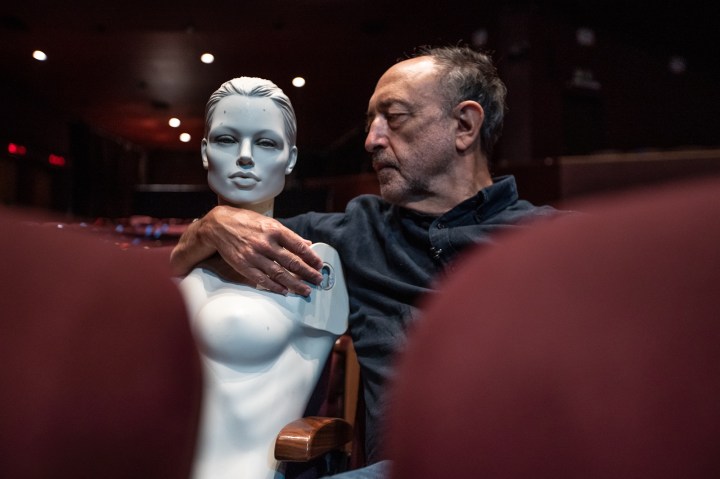
An abiding interest in psychology and a lifetime’s worth of experiences in difficult places have established him as a visual curator of humanity’s uncanny interior world. And now photographer Roger Ballen has designed his first opera. Unsurprisingly, it’s no straightforward fairy tale.
The American, Johannesburg-based Roger Ballen creates worlds. Strange, disturbing, sense-jolting and often whacky, worlds. Places that straddle some indefinable, enigmatic space infused with elements of reality and fiction, connecting documentary with the imagination.
They’re worlds connoting dreams. Or, more likely, nightmares.
These imagined places are the setting for scenes that most regard as dark, disturbing, unsettling; they’re macabre, uncanny, potentially frightening. Funny, too, although you might hold your laughter in certain company. Unavoidable to notice is the bleakness, the despair, the uncomfortable weirdness that pervades his photographs and videos, too.

Immersed, 2016; Photographs Roger Ballen
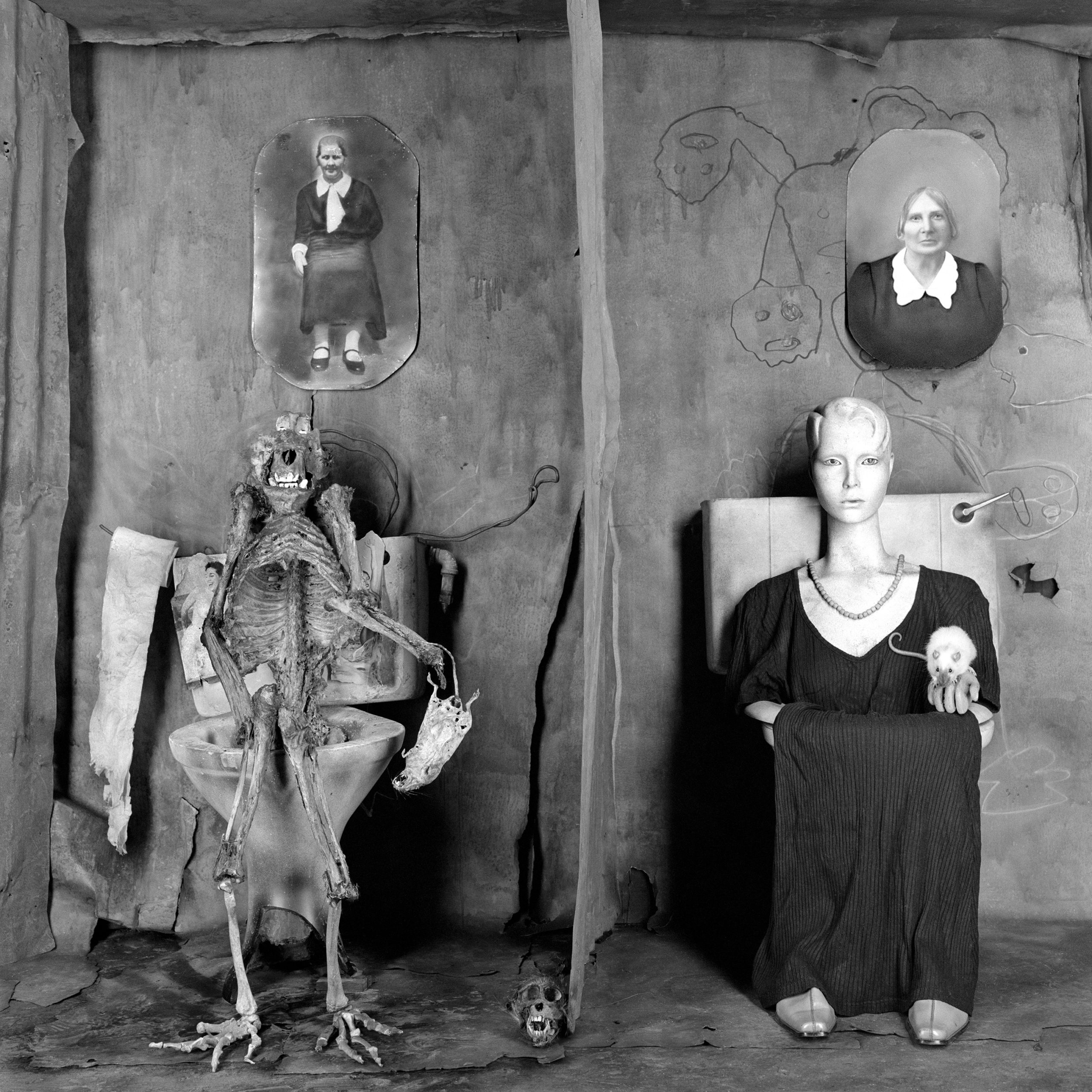
Inevitable, 2013; Photographs Roger Ballen

Addicted, 2014; Photograph Roger Ballen
All these feelings are rooted in actuality, inspired by people encountered and places explored. “It’s not just a fantasy trip that I’ve had over the years,” he says, “but real experiences with real people in difficult places, violent places, chaotic places, places on the margin that left a deep impact on me.”
Down the line, he says those experiences have been transformed – “in my imagination and through the medium of photography” – and built upon “to create more abstract, more complex imagery”. He says that over his years as a photographer (including many in which he’s worked closely with his studio collaborator, Marguerite Rossouw), he has taken the medium “to new and different places that in many ways are psychological states of being”.
The resulting pictures are strangely playful, off-beat and in some ways radical. And they’re sufficiently distinctive that the term “Ballenesque” is now applied as a kind of aesthetic category.
While certain symbols and motifs tend to recur, Ballen works organically, arranging within each scene a complex assortment of elements. There might be dishevelled and decapitated dolls, primitive drawings of faces with ill-fitting bodies on walls, stuffed animals, sculptures made from wire coat hangers, and all sorts of broken bits and pieces, rusted wire bed frames, bedraggled mattresses and torn sofas, curious artefacts bought from market stalls.

Disconnected, 2017; Photograph and mise-en-scène Roger Ballen
The arrangements of these elements seem to intensify some sense of alienation, some ominous quality that hints at the internal workings of the unknowable mind. You’re gripped by an emotional response but you don’t necessarily know what’s triggered the pangs of worry. What you’re seeing isn’t real, but your feelings about it are.
In his words, his photographs, videos and installations are really “non-physical environments or mental states that in some way or another are part of us”. Put another way, the scenes Ballen creates are essentially representations of psychological places.
And they sure do touch a nerve. His work, for example, prompted the foundation of the zef-rap outfit Die Antwoord, who drew from his photographs to create their own twisted parallel universe. Ballen collaborated with the duo on their viral music video, I Fink U Freeky, tethering his aesthetic to popular consciousness – and upsetting plenty of people, too.
Die Antwoord’s hip-hop reclaiming of a space for the down-and-out tribes was not the first foray into controversy for Ballen. He’d attracted a degree of notoriety following the release of his career-shifting book, Platteland, in 1994. In it, he curated portraits taken over many years in poor white rural South African communities.
While the unexpected critical success of the book catapulted Ballen into the artworld stratosphere, it also made him aware of the presence of something more profound, more enigmatic, in the pictures he was taking. He took the hint and transformed what had been until then a hobby into a full-time career as an art photographer.
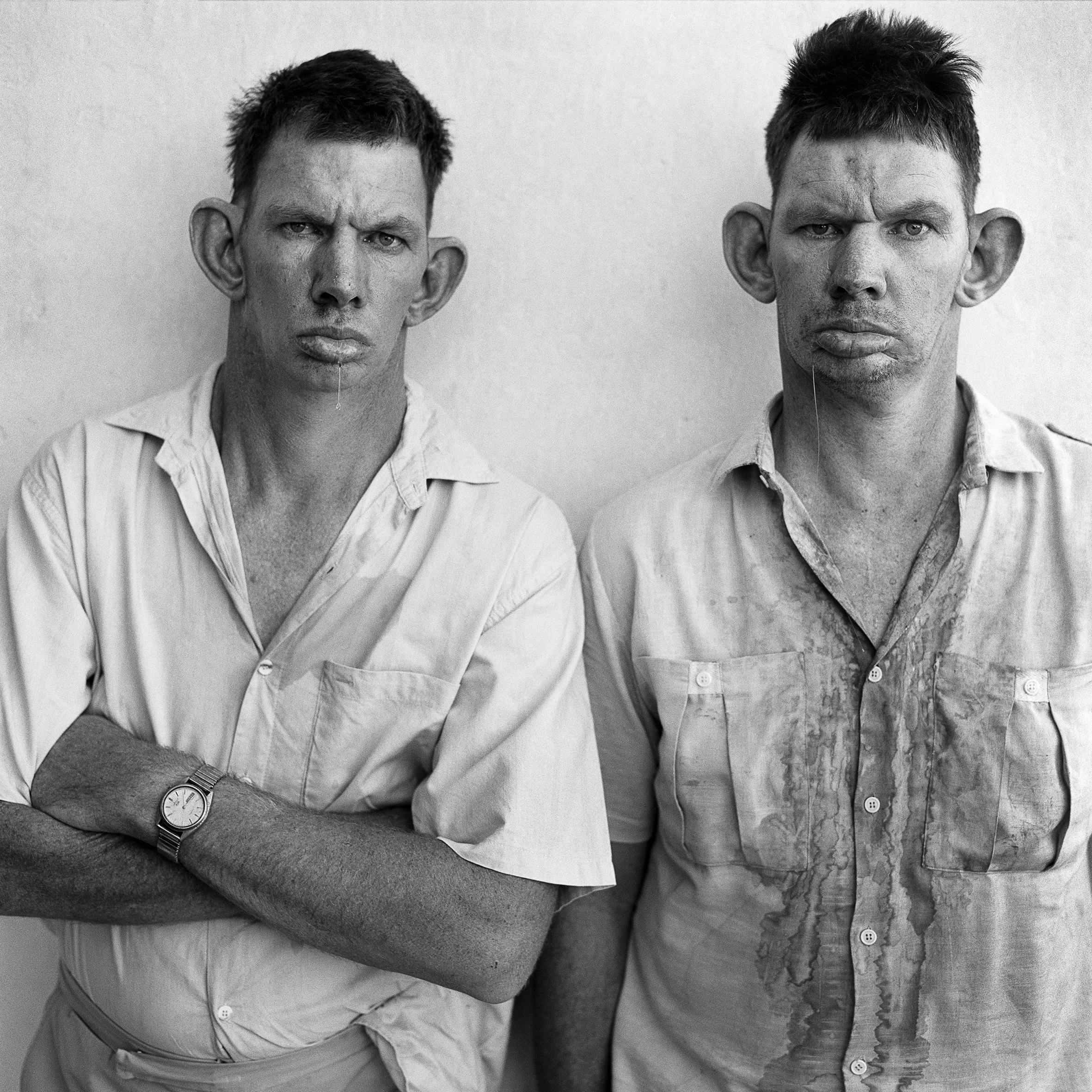
Dresie and Casie, Twins, Western Tvl, 1993. Photograph Roger Ballen
The bombshell moment of Platteland also drove his creativity in a new direction; his photographs, which had always had “something of a documentary gestalt in them”, became increasingly abstract and the subject began to fall away. “Since the beginning of the 1990s, the act of the documentary started to become left behind and my work started to become more of an attempt to formulate universal archetypal expressions,” he says.
His images became increasingly a product of Ballen trying to get inside his own mind. Not that the act of self-exploration was new to him.
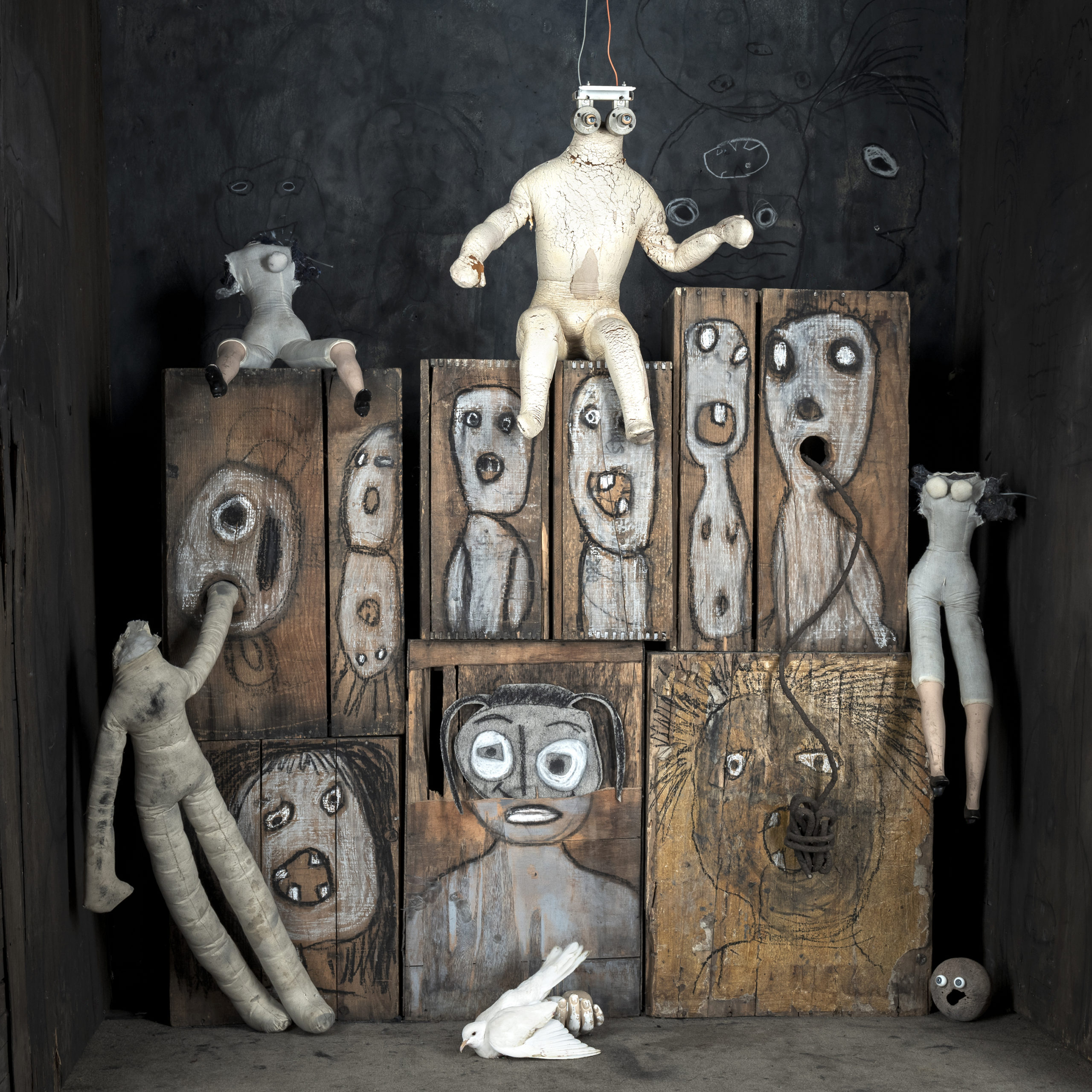
Discussion, 2018; Photograph and mise-en-scène Roger Ballen
Studying psychology in Berkeley, California in the 1960s and early 1970s was pivotal. All the more, he says, because he was a student at the time of the counterculture revolution. “It was the hippie period and psychology of the self was very in fashion. So there were a lot of people going to group therapy and counterculture events to learn more about the self.
“So, this focus on psychological issues, this interest in wanting to reveal the self through the image, was embedded in my mind from my early 20s; from early on, this was part of my understanding of photography. It was always in a way a journey into the mind of Roger Ballen, into my personal experiences and into myself.
“This so-called Ballenesque style, I think, started to come together in the late 90s with the culmination of my Outland project, which followed Platteland: At the start of that project an aspect of ‘Ballenesque theatre’ had crept in, and by the end the pictures really no longer had a documentary aspect at all.”
It’s this theatricality that’s evolved, over decades, into an approach that involves creating scenes that straddle some in-between world where make-believe and reality are blurred.
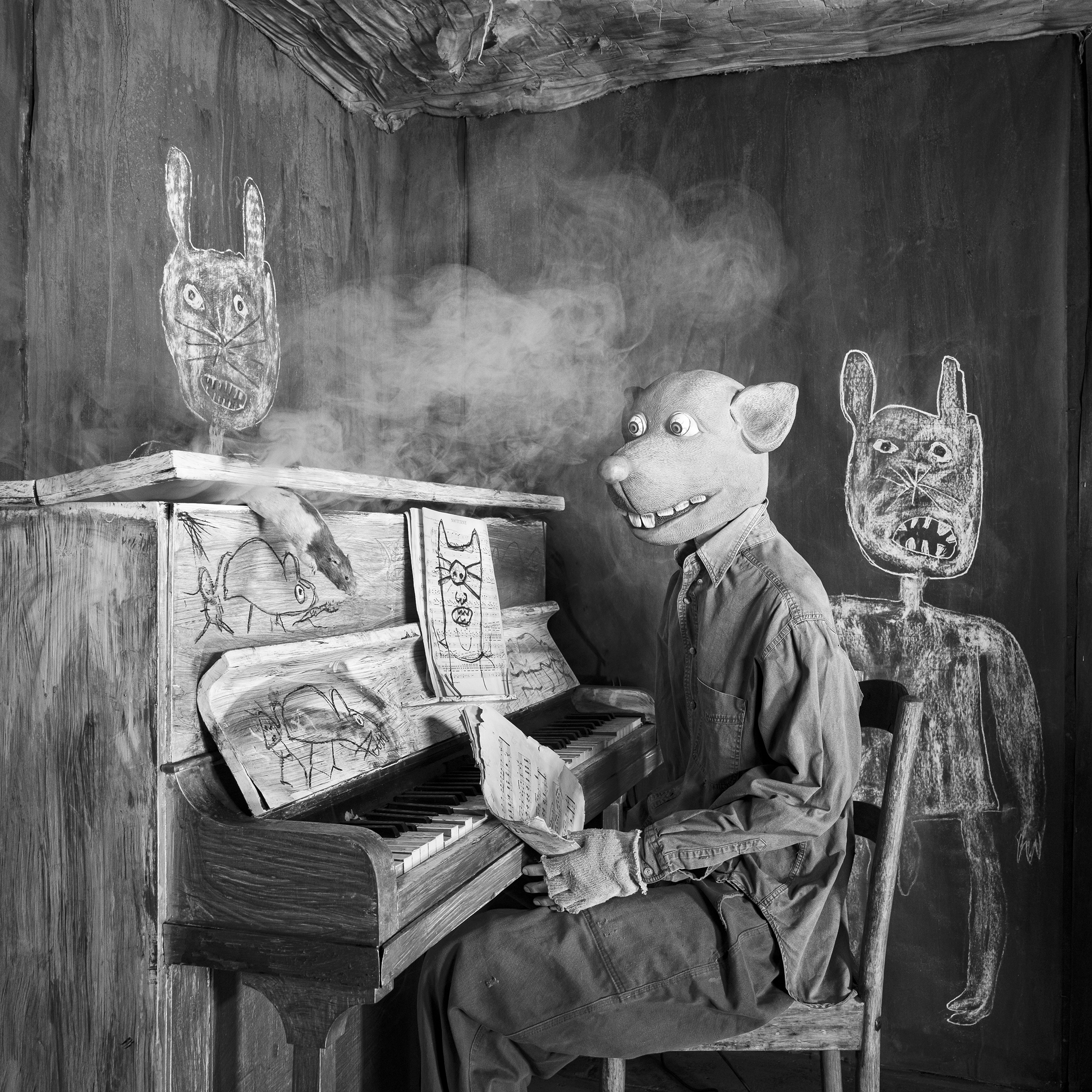
Smoked Out, from ‘Roger the Rat’, 2020; Photograph and mise-en-scène Roger Ballen
If you look at his recent series, Roger the Rat, you’ll recognise the vast journey from documentary to something that’s rooted in a kind of comical absurdism that plumbs the primordial, the archetypal, even the bestial. The series features black-and-white photographs for which Ballen created a part-human, part-rat creature who lives an isolated life outside of mainstream society. Produced in Johannesburg between 2015 and 2020, the images are quite unlike his previous work, yet are unmistakably suffused with the Ballenesque aesthetic.
It’s this distinctive aesthetic that Ballen and Rossouw have aimed to implant into their set designs for Cape Town Opera’s new production of Hänsel und Gretel, which premieres to a downsized audience on 3 April. As Ballen’s first time working on a live theatre show, it’s something of a coup for the opera world.
Written in the late 1800s by post-Wagnerian composer Engelbert Humperdinck, the opera is a rather jolly, musically upbeat concoction regularly churned out across Germany over Christmastime.
Humperdinck’s sister, who wrote the libretto, deliberately toned down the darker threads, and built in fantasy characters to temper the deeper Freudian elements that lurk at the heart of the Grimm brothers’ fairy tale. Sure, there are traces of child abandonment and cannibalism, but the opera skirts around such themes to operate as family-friendly.
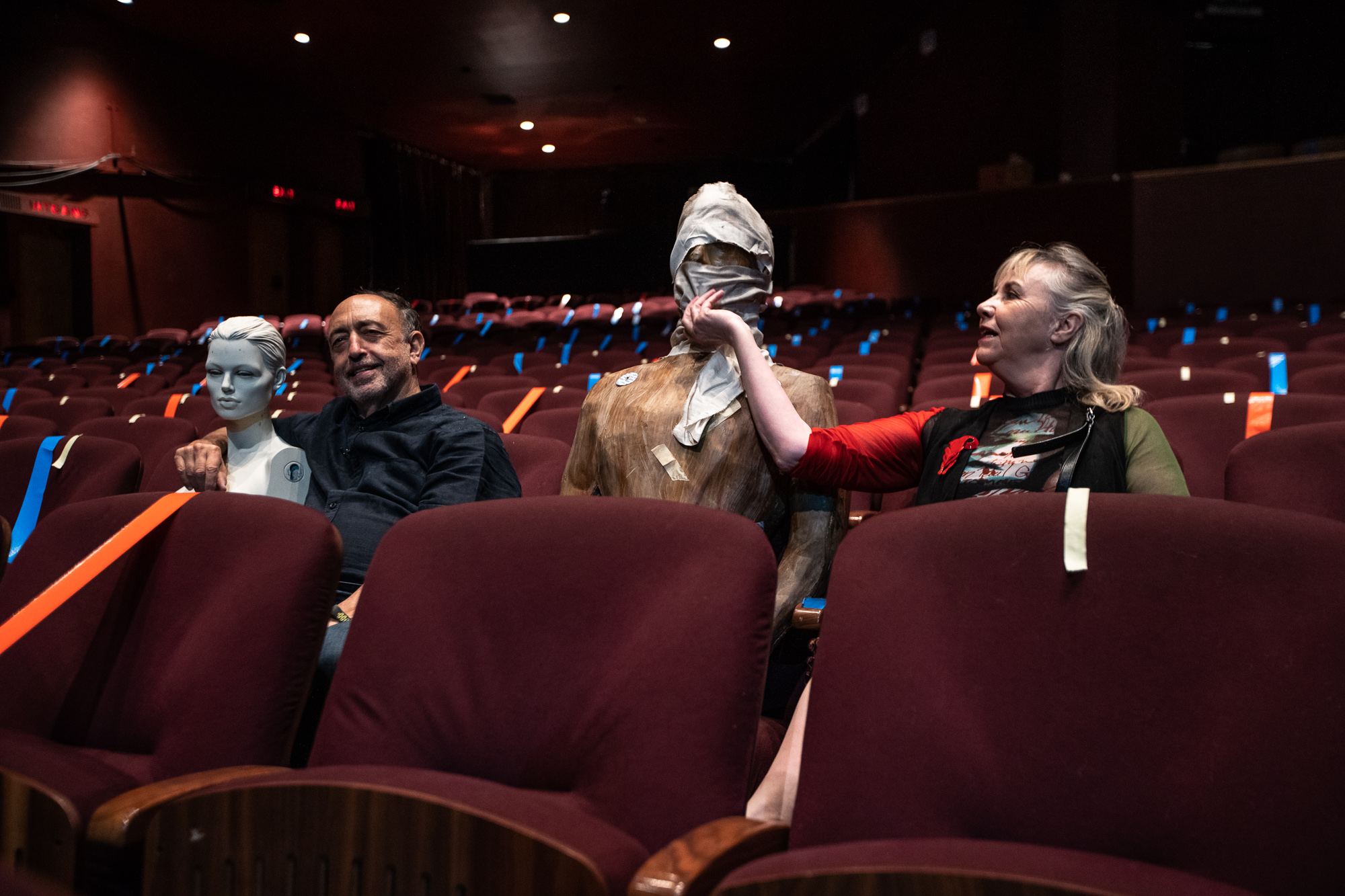
Roger Ballen and Marguerite Rossouw, photograph taken by Daniel Rutland Manners for Cape Town Opera.

Ballen and Rossouw on stage preparing for Hänsel und Gretel – Cape Town Opera
Opera director Alessandro Talevi had something a little different in mind for his production, though. He wanted to cut through the saccharine story elements, and juxtapose the sweetness of the music with layers of psychological realism.
With Ballen on board, this was never going to be some old-fashioned Eurocentric fuddy-duddy opera you might associate with powdered wigs and period niceties, of course. Instead, it strikes out to be a show that peels back subconscious layers, taking us on a potentially unsettling journey.
Apart from a witch who cooks and devours children after abducting and imprisoning them, the story is rooted in a context of poverty. Indeed, in the original fairy tale, the titular children are sent into the woods because there is no food for them.
And so there’s a thematic resonance between the story and Ballen’s documentary work. “Alessandro felt it would be interesting to incorporate into the opera aspects of some of my earlier work dealing with poverty and isolation, marginalism and insanity,” Ballen says. “And so parts of that aesthetic are incorporated into the sets. For example, there’s the house of the parents and their children, and that could feel like some sort of impoverished shack in the Platteland.”
In Ballen’s hands, though, there’s more to it than merely representing the material, external aspects of visual reality. More than representing the physical social circumstance of Hänsel and Gretel’s family, Ballen’s interest is in expressing some deeper psychological reality – archetypal psychic states – that will expand the opera, so that “it’s not just a documentary on South African poverty”.

Ballen’s poster image for Cape Town Opera’s Hänsel und Gretel.
For Talevi, Ballen’s visual instincts are an opportunity to link the audience back to an altogether darker, more sinister take on the fairy tale, highlighting the grimmer aspects that lurk beneath the surface.
And while audiences will likely experience this dredging up of hidden meanings, Ballen doesn’t regard his work as “dark”. He says he doesn’t distinguish between light and dark, just as his notion of what constitutes beauty falls outside the norm.
“When people refer to my work as dark it’s usually because they have a repressed state of mind,” he says. “It’s not a matter of dark or light; it’s simply our way of expressing our aesthetic, a way of expressing a state of being.”
In this sense, his work is essentially an expression of the absurdity of human existence; in the images and symbols of brokenness and despair we recognise that we are trapped in a chaotic universe and there is no escape.
What we see is really an attempt to express the unsayable.
“The subconscious mind isn’t necessarily a verbal mind,” says Ballen. “So we are working in the space between nonverbal and conscious reflection. What we want is to create an impact on people’s state of being, something that establishes a relationship between you and what’s happening on stage that is transcendental.”
The hope, he says, is that the visual world he and Rossouw have designed and built for the opera will automatically create that transcendental experience. “It’s like sitting on the top of a mountain, watching the sunset – something like what Maslow calls a ‘peak experience’, a sense of internal revelation.”
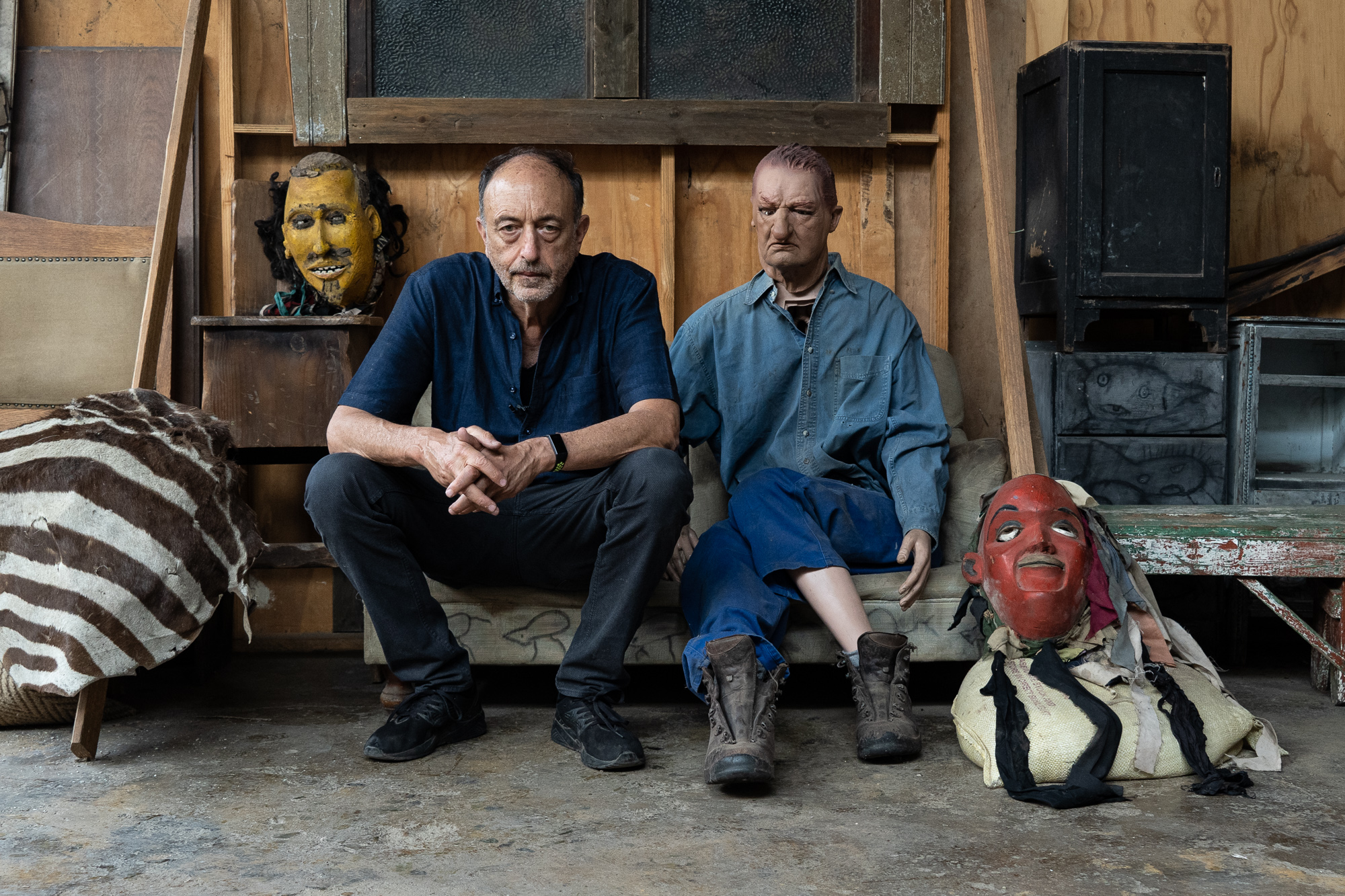
Roger Ballen, photograph taken by Daniel Rutland Manners for Cape Town Opera.
Ballen says the complexity of the human mind makes it impossible to explain how precisely his aesthetic has the effect – the impact – that it does.
“There is no formula to achieve this,” he says. “I always tell people, when my heart beats, eight billion other hearts beat – I don’t know what goes on in other people’s minds. But we have certain criteria that we use, an instinct that tells us, whether or not a picture is where we want it to be, that lets us know when we’re happy with it and we’re ready to let it go and move on. Or, if it’s not there and it’s not meeting that enigmatic level of expression we seek – if it isn’t, we either have to improve the picture or move on to something else.”
Asked where this aesthetic instinct comes from, Ballen says it has been internalised from having worked in a particular way for many years. “We don’t say, ‘We’re going to try and create a depressing picture, or a funny picture’. We just create what we do, work according to an internal sensibility that tells us if and when a picture meets a certain level of expression.
“We’re programmed to do this, we are programmed to produce that distinctive reality, whether it’s realised in the form of two-dimensional photographs or three-dimensional sets. We do it every day, producing work year after year, so we are programmed to do it.”

Roger Ballen and Marguerite Rossouw on stage planning for Hänsel und Gretel; photograph taken by Daniel Rutland Manners for Cape Town Opera.
The hard, disciplined, focused work is also coupled with a relentless drive towards originality, to be authentically one-of-a-kind. For Ballen, fundamental to being an artist is having a recognisable, distinctive style.
“Our goal is not to emulate anybody. The worst thing possible is being told, ‘Oh, that looks just like a Picasso flower!’ We don’t want to hear that. When people ask us who inspires us, I say we’re inspired by our own photographs. You have to find new work through yourself and through hard work, discipline and focus. The work of art. And challenging yourself – putting yourself in places that aren’t necessarily easy to be in. You reconcile that and then you go further, deeper, to the next place.”
If that sounds like a tall order, it’s worth keeping in mind that Ballen has been taking pictures for 54 years, evolving his body of work across multiple styles, genres and technologies. “None of this stuff is something you can just walk into. It’s very rare that somebody can just all of a sudden produce something of major consequence. It’s an evolution.”
He says he likes to remind young, starting-out photographers that of all the steps that enabled him to arrive where he is today, few things beat genuine engagement. “There’s nothing like real experience in the world. That’s what my work is built on. Without those real experiences, the substance and the defining qualities of the work would not – I am 99% sure – be there.” DM/ ML
Cape Town Opera’s production of Hänsel und Gretel featuring sets designed and created by Roger Ballen and Marguerite Rossouw opens at the Artscape Opera House on 3 April for a short run with limited seating due to lockdown restrictions. The show sold out quickly but the Cape Town Opera has been allowed to make more tickets available for the remaining performances on 6, 8 and 10 April. Tickets are available through Computicket.















 Become an Insider
Become an Insider
Comments - Please login in order to comment.